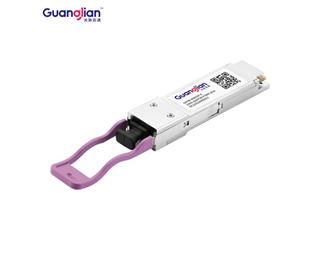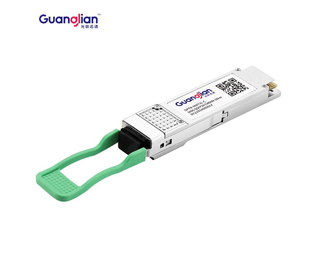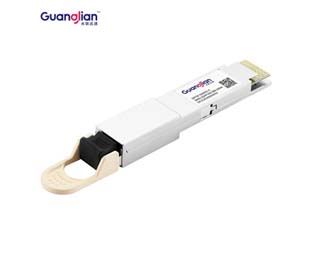The data center is the heart of your network operation, with the fiber optic transceiver the building block of the data transmission. A qualified transceiver offers a reliable solution for incorporating flexibility, manageability, and scalability into high-density fiber networks.
When it comes to selecting a transceiver module, how do make your choice valid and wise? Besides relying on optical transceiver manufacturers, you also have to know the trends in the optical transceiver market. And more importantly, to justify the quality and compatibility of the optical transceivers, as well as the services and supports they come with.
The unceasing need for network speed and efficiency makes the data center a more demanding place, and optical transceivers also evolve to satisfy the need for higher density and larger capacity. The broad transceiver portfolio usually consists of the following types, customers could choose the right one based on the specific usage environments and speed needs.
100GBASE-QSFP28-CWDM4-10km Optical Transceiver Module
SFP: A wide range of protocols and rates (Fast Ethernet, Gigabit Ethernet, Fibre Channel, Sonet/SDH) which operate in either commercial or extended temperature environments.
SFP+: Designed for 10G Ethernet and 10G Fibre Channels.
XFP: Supporting a variety of 10Gbps protocols (Ethernet, Sonet/SDH, Fibre Channel).
X2: 10G Ethernet standard over a variety of distances.
SFP28: Designed for 25G Ethernet.
QSFP+: 40 Gbps interfaces support 40G Ethernet and OTN standards over multimode or single-mode fiber.
QSFP28: 100 Gbps interfaces support 1000G Ethernet and OTN standards over multimode or single-mode fiber.
To be fair, you should always look beyond price when picking a supplier of any network or IT device. Apart from the type of transceiver that basically depends on your device, there are still some critical aspects to consider, such as the transceiver performance, compatibility, and interoperability testing, as well as the service and support provided.
200G QSFP56
Third-party optics has now secured a fairly important position in the network component market since they fill the gap to provide multiple compatible options at a considerably lower price. Currently, an increasing amount of customers see third-party optical transceivers as a decent choice over the cost-prohibitive OEM optics. In this case, transceiver compatibility with your network switch becomes critical.
The Multi-Source Agreement (MSA) standards specify all the elements of a fiber optic transceiver - both mechanically and electrically, so optical transceiver companies are able to provide transceivers that are identical in form factor and functionality to original brands while assuring compatibility across multiple OEM types of equipment. Driven by the fierce competition on the market, many third-party transceivers can even exceed OEM transceivers in performance, reliability, and warranty.
DDM or Digital Diagnostics Monitoring is a technology used to monitor real-time transceiver parameters, such as optical output power, optical input power, temperature, laser bias current, transceiver supply voltage, etc. DOM refers to Digital Optical Monitoring, which provides users with critical information concerning the TX (transmit) and RX (receive) ports' status, input/output power, temperature, and voltage.
Apparently, DDM and DOM are identical functions that are usually applied together to deliver real-time monitoring of optical transceivers. These functions help predict module lifespan, locate faults and verify module compatibility, so that network technicians are able to check and ensure that the module is functioning well.
100GBASE-QSFP28-PSM4-500m/2km Optical Transceiver Module
The common transceiver modules on the market today are used in volume and for many access applications, which account for roughly 10% to 15% of network capital spending, thus the cost per gigabit and per transceiver unit is key.
A good transceiver module is expected to retain a balance between quality and costs, so you can put dollars back into your IT budget while maintaining your peace of mind. Then take those savings and apply them to the innovation, automation, and tools your organization needs to stay competitive, relevant, and ready to reach the next level of business success.
When purchasing optical transceivers, identifying the qualities with the lowest prices is a common goal. Wise customers should pick a reliable third-party optics supplier holistically, and consider factors like the breadth of products supported, compatibility and testing processes, supports, and reputation in their buying decisions.
Guanglian broad product selection and innovative technology have made us the optical module manufacturer of choice for all major networking equipment vendors worldwide. If you need further info or to buy optical transceivers, please contact us.
100G CFP vs QSFP28: Which One to Choose?
Jun. 11, 2022What Makes the Best Optical Transceiver Module?
May. 27, 2022200G QSFP56 Optical Module Knowledge Full Explanation
Apr. 25, 2022
100G CFP vs QSFP28: Which One to Choose?
Jun. 11, 2022
What Makes the Best Optical Transceiver Module?
May. 27, 2022Copyright ©Guanglian Xuntong Technology Group Co., Ltd. All Rights Reserved | Sitemap
